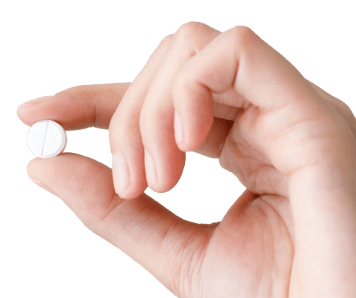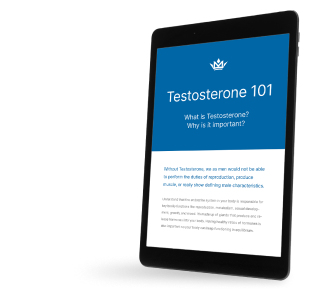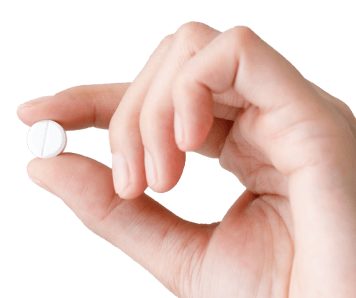GLP-1s work. There’s a reason they’ve made headlines for what they do—dramatic weight loss, better blood sugar control, a kind of medical magic for many people grappling with obesity or type 2 diabetes.
But that’s just part of the story.
A new GLP-1 study published in Trends in Food Science & Technology suggests these drugs might be doing something else—something quieter, but possibly just as significant.
They could be changing the way people eat. Not just in terms of how much, but what. And maybe even why.
At first glance, that might sound like a stretch. After all, GLP-1s are designed to suppress appetite, not rewrite our cravings.
But the data tell an interesting story.
The Study: Are GLP-1 Users Actually Eating Differently?
Researchers dug into data from the National Health and Nutrition Examination Survey (NHANES)—a massive, long-running study that tracks how Americans eat, move, and live.
They sorted participants into three groups:
- Current users of GLP-1 receptor agonists
- Previous users, who had stopped using the drugs
- Never users
Then they looked at... well, pretty much everything food-related.
Calories, macronutrients, fruits, veggies, whole grains, BMI, waist circumference—you name it.
The goal wasn’t just to confirm what we already knew (that these drugs curb hunger), but to see whether they affect broader food choices. In other words: Are people eating better?
What They Found: A Shift Toward Healthier Choices
In a word? Yes.
Compared to those who’d never used GLP-1 meds, current users showed some consistent trends:
- Fewer total calories. No surprise there—less appetite means less food.
- Less added sugar and saturated fat. That’s a bigger deal. These are the usual suspects in poor diets, and users seemed to be steering clear of them.
- More fruits, vegetables, and whole grains. Not just less junk, but more good stuff.
- Lower BMI and waist measurements. Again, expected—but it reinforces the idea that the lifestyle changes may be real, not just side effects.
Here’s what’s particularly interesting: even former users—those who’d stopped taking the medication—tended to land somewhere in the middle.
Not quite as healthy as current users, but not as unhealthy as those who’d never taken the drugs at all. That suggests the effect might linger, at least for a while.
Why It Matters
If you’ve taken semaglutide and found yourself suddenly uninterested in chips or soda, this might explain why. You're not imagining it.
What’s compelling here is the idea that these medications don’t just dampen hunger—they might subtly rewire the brain’s relationship to food.
It’s not just about eating less; it’s about wanting different things. That’s a fundamentally different approach than, say, white-knuckling your way through a keto diet.
And if that shift is real—even partially—it could explain why some people lose weight and keep it off without constant effort. Because willpower, as we all know, is fickle. But if the desire itself changes? That’s powerful.
Why Would That Happen?
The study was observational, so it can’t prove cause and effect. Still, the authors float a few ideas:
- Reduced food reward signaling. GLP-1s may tone down the brain’s response to high-calorie foods. That dopamine rush from fries or ice cream? Maybe it just isn’t hitting the same.
- Increased satiety and slower digestion. You feel full sooner, and stay full longer. That could lead to smaller portions and fewer snacks—almost by accident.
- Smoother metabolic feedback. With better blood sugar regulation, you’re less likely to get cravings from energy crashes.Psychological momentum. This one’s hard to measure but easy to believe. When you see progress—on the scale, in your clothes, in your lab results—you’re more likely to make better choices. Success tends to feed itself.
Are these changes permanent? That’s unclear. Some might fade over time, especially if the medication is stopped. But even temporary shifts could lay the foundation for long-term habits. Or at least, that’s the hope.
Bigger Picture: Public Health and Policy
Here’s where things get really interesting. If GLP-1 meds continue to grow in popularity—and all signs suggest they will—we might start to see ripple effects beyond individual users.
More demand for healthy food. Less for ultra-processed stuff. Maybe even pressure on food manufacturers to clean up their products. That’s speculation, sure. But plausible.
There’s also a bigger equity issue here. In this study, GLP-1 users were more likely to be White and college-educated. That highlights a very real access gap—one that public health officials will need to grapple with as these drugs become more central to obesity care.
What It Means for You…
If you’re already on a GLP-1 medication, and you’ve noticed your eating habits changing in ways you didn’t expect—this study backs you up.
You’re not alone, and there’s science behind what you’re experiencing.
If you’re considering starting one, it’s worth knowing: the benefits might go beyond appetite and weight.
The key is to find a GLP-1 therapy that’s tailored to your needs…
That could mean a weight loss starter pack to get you going, or even microdosed GLP-1s if you’re looking to burn that stubborn last 10 pounds.
You may find yourself genuinely drawn to healthier choices. That’s a side effect worth rooting for.
A New Kind of Nutrition Tool?
We’re still early in understanding the full impact of these drugs. Right now, they’re primarily used to manage diabetes or support weight loss. But they may turn out to be valuable tools in shaping dietary patterns more broadly.
Healthier eating, for more people, without as much struggle.
It’s radical. Period.
Of course, questions remain. How long do these effects last? Do they work the same across different populations? Can we replicate the behavioral benefits without the drugs themselves?
We don’t have all the answers. Not yet. But this study adds another piece to a fascinating puzzle—and it suggests that GLP-1s may be doing more than just shrinking waistlines.
They might be helping reshape how a nation eats.
Quietly, but powerfully.
----
Disclaimer: The contents of this article, including, but not limited to, text, graphics, images, and other information, is for information purposes only and does not constitute medical advice. The information contained herein is not a substitute for and should never be relied upon for professional medical advice. The content is not meant to be complete or exhaustive or to be applicable to any specific individual's medical condition. You should consult a licensed healthcare professional before starting any health protocol and seek the advice of your physician or other medical professional if you have questions or concerns about a medical condition. Always talk to your doctor about the risks and benefits of any treatment. Never disregard or delay seeking professional medical advice or treatment because of something you have read on this site. Maximus does not recommend, endorse, or make any representation about the efficacy, appropriateness, or suitability of any specific test, products, procedures, treatments, services, opinions, healthcare providers or other information contained herein. Maximus is not responsible for, nor will they bear any liability for, the content provided herein or any actions or outcomes resulting from or related to its use.








